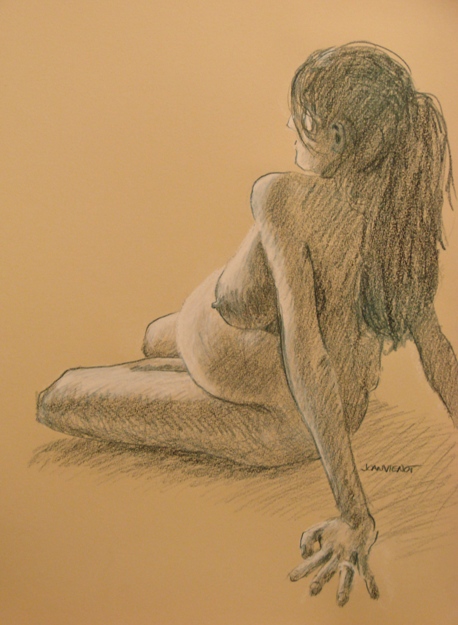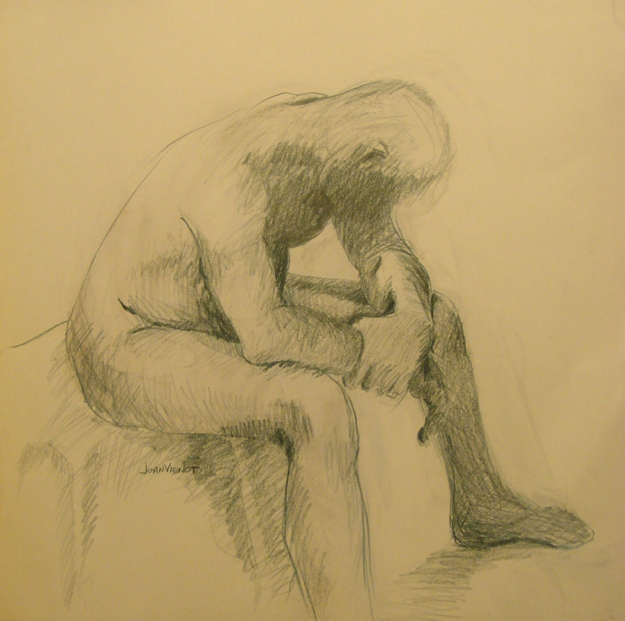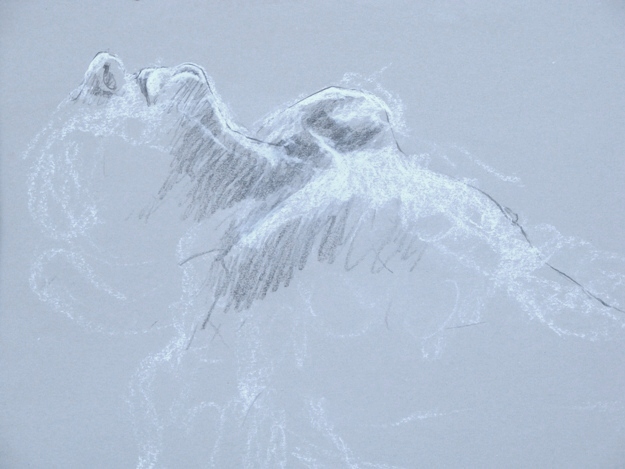I ventured into new territory today, taking a workshop on encaustic painting at Studio b. The closest I had come to encaustic painting was when I was a child, melting crayons and drizzling the molten wax onto paper. I don’t remember very much about my childhood experience, but I’m sure that what I loved most about it was playing with the candle. Today we traded the candle for a blowtorch, which was infinitely more exciting!
 First we used a paintbrush to put hot bees’ wax onto the board to make a background, applying multiple layers, scraping each layer smooth. Then we added pigment to the wax and brushed colors on, building up textures, carving into the wax, cutting and scratching into it, stenciling, stamping, embossing, adding collage, and even writing into the wax to create powerful, colorful 12″ x 12″ encaustic paintings.
First we used a paintbrush to put hot bees’ wax onto the board to make a background, applying multiple layers, scraping each layer smooth. Then we added pigment to the wax and brushed colors on, building up textures, carving into the wax, cutting and scratching into it, stenciling, stamping, embossing, adding collage, and even writing into the wax to create powerful, colorful 12″ x 12″ encaustic paintings.
Instructor Rae Broyles demonstrated many different ways to work the wax, and then she worked alongside us on a painting of her own. We were surrounded by some of Rae’s recent work on the walls at Studio b.
With every medium, there is a craftsmanship that must be mastered before one can be freely expressive, but we all had a lot of fun trying, and we were all pretty successful, I think. Part of it of course was Rae’s excellent instruction, but part too was her relaxed, and even playful, attitude. After all, creativity often is playfulness.
I pressed a plant into the soft wax and then filled the embossing with colors, layering additional cover layers, so that some parts are in sharp focus and others appear to be further away. I tried to put a fish in it, and he disappeared, and I decided I didn’t have enough control to put a small scuba diver in the background, which was my other idea for an underwater scene. So it ended up being a picture of some kind of flowering plant.
 For my second piece I wanted to experiment with a figure, and I used the general pose that we had at figure drawing last week, dividing the background with simple geometric shapes. I tried making lines with a hot drawing tool, but that didn’t work very well, so I carved lines using a clay sculpting tool, and then filled the lines in with black wax, scraping off the excess.
For my second piece I wanted to experiment with a figure, and I used the general pose that we had at figure drawing last week, dividing the background with simple geometric shapes. I tried making lines with a hot drawing tool, but that didn’t work very well, so I carved lines using a clay sculpting tool, and then filled the lines in with black wax, scraping off the excess.
Will I do more encaustic work? Maybe so. It’s fun, it forces me to accept looser, less-controlled expression, and all I would need to buy, that I don’t already have, is an electric flat grill-pan to heat the wax in aluminum bread-tins. (Oh, and I would need that neat trigger starter for the blowtorch, that was pretty cool.)
































 This week in Figure Drawing at
This week in Figure Drawing at 

































